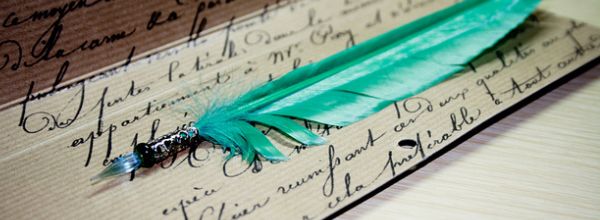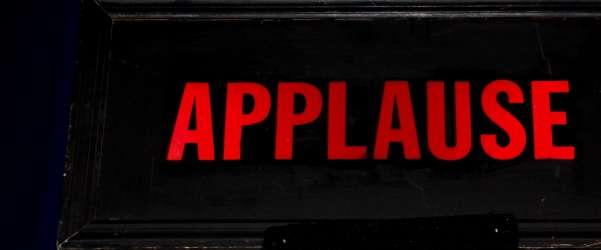So you’ve nailed a publication in a top journal. Congratulations! Your natural next step the moment your new paper is released is to add it to your LinkedIn and other social media profiles. But are you allowed to share the full text? The answer isn’t always straightforward. This article explains why sharing your journal articles can be problematic and elucidates ways to share publicly (and sometimes semi-publicly) without breaking copyright. This article follows our previous piece on how to access paywalled journal articles without breaking the law.
Why (or Why Not) Share Your Publication?
Sharing your published research has benefits similar to those of sharing your lab protocols.
First, it enables the progress of science and medicine by letting other researchers build on your discoveries.
Second, it facilitates networking and opens up possibilities for collaboration. Researchers looking up keywords about your work will be more likely to stumble upon your publication if it’s on social media and not only PubMed, at which point they might contact you with a follow request or perhaps a question.
This brings us to the third benefit: more hits to your publication lead to more citations of your work, upping your h-index and general standing as a researcher.
Sharing your journal articles sounds more and more like a no-brainer now, doesn’t it? Not so fast. Posting a PDF of your paper or even a single image from it may not be legal without the journal’s permission, even though you are the author.
This is because many journals (though with notable exceptions, including the BMC and PLOS journals [1,2]) gain ownership of the copyright to your piece when they agree to publish it. It’s more common and less risky to post a link rather than actual content, but even links can be complicated as your manuscript is updated from preprint to just-accepted to the final version [3].
How and What to Share
Given that the extent and degree of (non)exclusivity of copyright transfer between authors and journals vary from journal to journal, the capacity to which you can legally share your articles depends largely on where you publish them.
A good place to start is knowing your sharing rights is How Can I Share It [4]. Entering the DOI (Digital Object Identifier) of your paper generates a list of databases where it can be shared along with a notice as to what exactly (full text? abstract and protected link?) can be shared.
“Casual” social media such as Twitter, Facebook, or Instagram usually doesn’t call for posting something as technically involved as a full text anyway. Your best bet is to post the DOI because it links to the most updated URL for the article, therefore remaining permanent even when papers change status—e.g., from just-published to final in-house edits. It also future-proofs against journal websites changing their URL structures (for more about the advantages and workings of DOIs, consult Bitesize Bio’s previous piece on them).
Accompany the DOI link with a layperson-friendly sentence or two summarizing the salient points of your article and you’ve got yourself a succinct, effective post for sharing your journal articles with friends and relatives.
Even so, your publication may contain an eye-catching image that you’ll want to share alongside the link to make your post pop. Before you include it you’ll have to make sure you’re not infringing on copyright laws.
Again, this is the sort of question you can answer by checking on How Can I Share It or by (re)reading your signed agreement with the journal. You might be allowed to share a single image or an earlier version of the paper if not the full text.
If still in doubt, the best course of action is to ask your publisher or editor. They want to generate as many reads as you do, so of course, they’ll be more than happy to help you promote your article! Many scientific journals have highly developed mechanisms for assisting authors in publicizing their papers.
Springer Nature (the publisher of the Nature journals [5]) is committed to enabling sharing. It allows authors to provide links to full texts on their websites, university pages, social media channels, and other collaborative networks [6].
Journals of the American Chemical Society (ACS) allow authors to share links to free full texts of their articles 50 times the first year after publication, and then an unlimited number of times thereafter [7]. They also permit sharing of the just-accepted versions of manuscripts in public repositories [8].
Other journals may or may not allow the distribution of full texts, though some allow for sharing beyond a mere link to the abstract with a lock on reading further. For example, Proceedings of the National Academy of Sciences (PNAS) provides its authors with Kudos [9], a service that assists them in determining the ideal platforms to promote their published research and helps generate plain-language summaries of the work.
If you’re working at an academic institution or for a large company, another resource you could turn to is your press room, where media relations specialists could produce press releases, publish layperson-language articles on your institutional website, and possibly score you a press interview! While pursuing these avenues, it is all the more important not to infringe on your journal’s copyright or violate the terms of an embargo under which your paper may still be (more on embargoes later).
Ensure your sharing restrictions are clear to you and your pressroom contact, by remaining in communication with them and with your publisher or editor at the journal.
Sharing Your Journal Articles: Before and After Publication
Preprints—manuscripts shared prior to peer-reviewed publication—have recently blossomed in popularity in the research community [10]. The usual channels for sharing preprints are bioRxiv (pronounced “bio-archive”) for the biological sciences [11], medRxiv for medicine [12], chemRxiv for chemistry [13], and arXiv for other, often related fields such as mathematics and economics [14], as well as other analogously titled “archive” sites for other subjects [15].
While sharing a preprint of your manuscript is a great way to get the word out there about your latest findings, certain rules apply that ensure no copyright infringement on the journal in which you ultimately want to publish your finalized paper.
Before uploading a preprint, you’ll need to check whether or not your target journal accepts published preprints. You can look up the journal or publisher on Sherpa Romeo [16] or on Wikipedia’s list that indicates preprint policies [17].
In addition, while you are generally allowed to revise preprints after uploading, many journals prohibit preprinting versions of a manuscript that incorporate revisions made due to journal reviewers’ comments [18].
After your paper is accepted by the journal, you may have to withhold details about it until it’s published, because some journals enforce an embargo period (usually no longer than a week) during which they supply reporters and relevant experts with copies of the article.
This allows them to write articles about the research that can only be released once the article is published. Embargoes are usually only employed for articles that contain headline-making discoveries or have substantial medical or economic implications [19]. If you’re working with your institutional press room, make sure your contact there is aware of the terms of your paper’s embargo.
After publication, depending on your author’s agreement, your article may still go through a couple of stages marked by different levels of sharing restrictions.
A gold open access (Gold OA) model would make your publication immediately and freely available to the public, while a green open access (Green OA) model would lead to a paywalled period (anywhere from six to twenty-four months depending on the journal) during which the work cannot be freely shared, but after which you as the author are free to post it to a repository for free access [20].
Whom to Share With
So far we’ve gone over scenarios where you may or may not be permitted to share your paper publicly. It’s worth noting that, in many of those cases, private sharing could still be allowable to an extent.
Even during the paywalled period when an article is newly published, Elsevier permits sharing of the accepted manuscript—that is, the version that incorporates revisions after peer review but is not yet copy-edited, typeset, etc. by journal staff—to an institutional repository or scholarly network where access is restricted to certain people, such as you, your PI and fellow lab members, and your lab’s collaborators [3].
SAGE journals allow deposit of the accepted manuscript to your institutional repository, but not to those of other institutions until a 12-month period has elapsed or you’re only uploading the original submission—that is, the version that you had first submitted to the journal [21].
Press embargoes, by definition, allow private sharing of accepted articles to news writers and other journalists, to let them produce material about the article on time for dissemination upon the article’s publication. JAMA permits public health experts (to help determine whether dissemination of the medical information in the publication is advisable) and media specialists (to prepare appropriate and responsible press releases) to discuss embargoed articles in private [22].
What about emailing your paper to individuals, such as friends, a small journal club group, or a person who requests it? This is where the fair-use law comes into play [23].
Copyright laws tend to be the most relaxed when copyrighted work is used in educational settings and most stringent when it is used for commercial purposes. It’s usually okay to email PDFs of papers to a small group of your fellow scholars as fair use—the keyword here being “usually.” As an exception, the American Medical Association (publisher of JAMA) stipulates that only physical copies should be shared [24]. If someone asks you for a copy of your paper, you may first need to have them attest that they’re not using it for commercial purposes, and make sure that your publisher allows private sharing of e-copies before sending one.
The bottom line: whenever you have any doubt about if you can share your paper, check with your journal publisher.
Who Else Could Share Your Publication
Don’t forget coauthors! That enthusiastic new graduate student excited to get their first publication might jump to social media and start sharing your journal articles without a second thought if no one educates them about these important steps to take first. This is a great opportunity for them to learn about the world of science publishing; discussing this matter prior to publication—and sharing this article with them!—would preempt their prematurely and perhaps illegally sharing copyrighted content.
Just as it’s essential to discuss authorship with your collaborators before the paper is even produced, it’s generally good practice to include an early discussion on journals and copyright while preparing to submit.
It’s worthwhile to talk about which journal to submit to first and what other ones to target, whether or not these journals are open-access, which access type to publish under if it’s a publisher like Elsevier that offers different access types [20], and whether enough funds are available to pay open-access fees.
It’s also a good idea after acceptance to get a copy of the edited publication to each author who worked on your paper—perhaps courtesy copies from the journal—because you don’t want a situation where authors can’t legally access their own work!
What to Avoid When Sharing Your Journal Articles
You likely have a ResearchGate account [25] and use it to stay connected to colleagues, share summaries of your ongoing projects, and ask and answer practical research and science questions. Users are also invited not only to list their publications on LinkedIn but also to include full texts.
But this platform lacks a gatekeeping mechanism that ensures that these texts are shared legally, so unless you have express permission from your publisher, it is advisable not to attach full texts and instead to stick to sharing only the abstract or else a layperson summary.
Further on the questionability spectrum is Sci-Hub, a platform where full texts of papers are pirated for free public access. Due to the illegal nature of many of the uploads [26], it is best to steer clear of it for your distribution (and for your own research use).
Do you still have questions about the wonderful world of scientific and academic sharing? Thinking of any rules to go by that weren’t covered here? Leave a comment below!
For more tips on keeping track of the scientific literature, head over to the Bitesize Bio Managing the Scientific Literature Hub.
References
- Springer Nature. The BMC-series journals. Accessed Sep. 12, 2020.
- PLOS. Accessed Sep. 12, 2020.
- Elsevier. Article Sharing. Accessed Sep. 12, 2020.
- How Can I Share It. Accessed Sep. 9, 2020.
- Nature.com. Accessed Sep. 13, 2020.
- Springer Nature. SharedIt. Accessed Sep. 9, 2020.
- ACS Publications. Author Benefits. Accessed Sep. 13, 2020.
- ACS Publications. Sharing Guidelines. Accessed Sep. 13, 2020.
- Kudos – Take control of your impact. Kudos. Accessed Sep. 13, 2020.
- Abdill RJ & Blekhman R. Tracking the popularity and outcomes of all bioRxiv preprints. eLife, Apr. 24, 2019; doi: 10.7554/eLife.45133
- bioRxiv. bioRxiv.org – the preprint server for Biology. Accessed Sep. 13, 2020.
- medRxiv. medRxiv.org – the preprint server for Health Sciences. Accessed Sep. 13, 2020.
- ChemRxivTM. ChemRxiv: the Preprint Server for Chemistry. Accessed Sep. 13, 2020.
- arXiv. arXiv.org e-Print archive. Accessed Sep. 13, 2020.
- Mouatt, JTV. The what, why, and how of preprints and peer review. Publons blog. Accessed Sep. 13, 2020.
- Sherpa Romeo. Accessed Sep. 14, 2020.
- List of academic journals by preprint policy. Wikipedia. Accessed Sep. 13, 2020.
- Frequently Asked Questions (FAQ). bioRxiv. Accessed Sep. 13, 2020.
- JAMA (The Journal of the American Medical Association) Network. Embargo Policy. Accessed Sep. 14, 2020.
- Elsevier. Sharing and promoting your article. Accessed Sep. 13, 2020.
- Stevens, P. How Do I Share My Article? Top Tips for After Publication. Social Science Space. Accessed Sep. 15, 2020.
- International Committee of Medical Journal Editors. Journals and the Media. Accessed Sep. 15, 2020.
- Stim, R (& updated by Farkas, B). The ‘Fair Use’ Rule: When Use of Copyrighted Material Is Acceptable. Nolo. Accessed Sep. 15, 2020.
- Copyright and Fair Use: Journal Clubs. Pumerantz Library Research Guides. Western University of Health Sciences. Accessed Sep. 15, 2020.
- ResearchGate. Accessed Sep. 16, 2020.
- Bohannon, J. Who’s downloading pirated papers? Everyone. Science, Apr. 29, 2016; doi: 10.1126/science.352.6285.508






